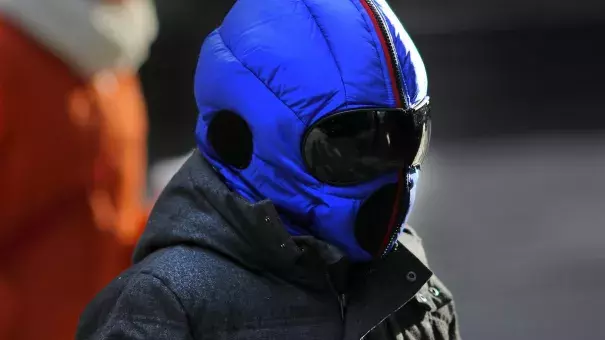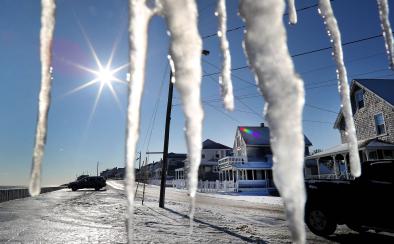Why Is It So Cold?

Have you been outside lately? If you're anywhere on the East Coast of the United States, it was probably not a very pleasant experience. It snowed in Florida on Wednesday, and hospitals in Southern cities like Atlanta have seen a surge in hypothermia patients. Meanwhile, temperatures in North Dakota and northern Minnesota have been recorded in the negative 50s with windchill, which is dangerous enough to give someone frostbite within minutes. Oh, and sharks are literally freezing to death in the water.
...
Rob Reale is a meteorologist who works as the director of education at the meterological firm WeatherWorks. He'd been working since 4 AM to draw up forecast reports for the company's clients when I got a hold of him Wednesday, but was kind enough to spend a few minutes with me on the phone explaining why it's so cold—and what's coming next.
...
So why is the pressure dropping so drastically? And how does a pressure drop cause winds to pick up?
It's a very complicated question. If you have higher pressure next to lower pressure, that alone is what causes the wind to strengthen. So if a meteorologist talks about a high-pressure day, that's associated with light winds and mild weather. But if you have a low-pressure [area,] especially near a high pressure [one,] that gradient in that pressure is what causes winds to strengthen.
Most storms will form with a temperature gradient, which there is in the Southeast [United States]. That's why storms form a lot of times off the Mid-Atlantic and into the Northeast—the Gulf current runs through there, and there's a temperature gradient in that area. Even if it's not a air temperature gradient, it's a water temperature gradient. Then there's moisture, and a disturbance moving through. This storm has those three basic ingredients right now.
Related Content



